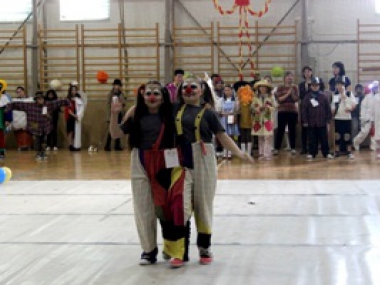It takes two...
Edited on
12 September 2017Roma and non-Roma children working together

We are in a classroom of the Nagykálló primary school - children sit around desks, heads together - they are drawing on big sheets of papers amidst lively discussion. In each group, somebody animatedly comes up with an idea, while another child starts to draw. Silence for a moment - and then suddenly the whole group bursts into laughter. No doubt, this is co-creation at its best. Co-creation that, by the way, involves Roma and non-Roma children working together towards the same goal.
This was the "co-drawing" event implemented as part of the Nagykálló’s Roma integration Local Action Plan. The event takes place at various locations simultaneously: at the kindergarten, at the primary school and also at the vocational school. The pictures are sometimes very different, but in the end they all tell the same basic story: how do we co-exist, how do we spend our days together. After the drawing event, the pictures were collected and exhibited in various locations: in the kindergarten, at the schools, at the city hall, and even at the main square during the Christmas Fair.
The best drawings were also used to print postcards the city would send to its partners and distribute at various events. A poster of the photos was also prepared, telling the story of the co-drawing events. It was a successful event, indeed, no question about it.
But it's the small human stories hidden behind the pictures that really make you feel the power of co-creation - that it can really bring people closer to each other. Like the two girls attending the same class at the primary school. They have been classmates for years - nothing more, nothing less. That is, until the co-drawing afternoon. They both like drawing, and by accident they started to work on the same picture in one group. They quickly realized that they share the same passion - and that they have a lot in common. They have been best friends ever since. So much so, that at the school carnival together they dressed up as clowns. Or, more precisely, one clown, with a common costume, sharing one leg of the trousers. Did I tell you that one of the girls is Roma and the other one is non-Roma? Not that it matters of course…
Submitted by gmatyasi on




